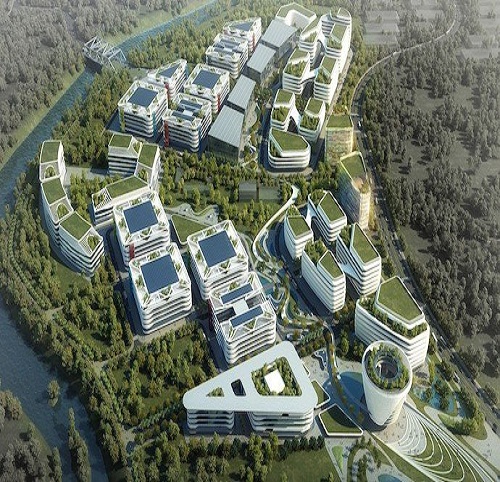The agricultural, industrial, technological and digital revolutions have each yielded fundamental shifts in the way we go about our daily working lives. In the process, it has spurred global economies in the ensuing centuries.
The 18th century labour-intensive farming processes and hierarchical systems of landlords and tenant farmers gave way to the 19th century manufacturing processes –in the hands of prominent industrialists of the first industrial revolution.
Central banks that recognised the economic upside of supporting mass-manufactured goods transformed the fabric of our life and work; cities became places of production and industry. People migrated from villages to cities to seek fame, fortune, and a supposedly better life.
Subsequently, technological advances and a greater shared equity came to characterise a 20th century technological revolution. It further optimised product manufacture and business outputs through the mass production or adoption of computers in the workplace and the introduction of the World Wide Web.
But it was the 21st century where technology has arguably reached a zenith, and has been coined the fourth industrial revolution. It has been marked by a shift from ‘the analogue’ to ‘the digital’. The term ‘smart’ has become an appendage to virtually every physical device that seeks to make our lives easier.
Unlike its revolutionary forbears, the digital revolution has taken place in a shockingly shorter period of time and has seen more revenue generated in the last 20 years of the internet than the entire period of the industrial revolution.
The five generations of ‘the office’
The modern office as we know it today started in the early 20th century – with buildings such as the Equitable Building, New York, becoming the hallmark of the first generation of office. These high rise offices were characterised by thick external load-bearing walls and window openings that sought to provide natural light and ventilation to a modern workforce that sat rank and file at their desks.
The second-generation of office reflected newly implemented zoning laws of 1916 that sought to maintain natural light and ventilation to the streets and provide setbacks to reduce risks of fire spreading from building to building – yielding a tiered wedding cake design as characterised by The Chrysler Building, Manhattan.
By the third-generation, the ubiquitous glass box office that one may associate with many a financial district today became an expression of modernity, power, prestige and technological advancement.
By the 1960s, as the skyscrapers reached for the sky, so too did these gas-guzzling behemoths’ correlating energy and water bills. As a reaction to spiralling resource consumption and poor thermal performance, in an age of environmental-consciousness left its imprint on the fourth generation of offices, as characterised by the 1990s eco skyscrapers such as The Commerzbank in Frankfurt, Germany.
So what of the fifth-generation? Hacker Dojo in California’s Silicon Valley and the Amazon office in Seattle are examples of the fifth-generation offices whereby voluminous spaces become ‘places’ as they encourage heightened level of flexible working, knowledge sharing and collaboration in an environmentally sensitive campus arrangement that is more akin to the medieval courtyard campuses of Oxbridge than its 20th century office counterparts.
The workplace of the future
So what can one glean from the above historical overview by way of improving one’s office environment? The triple bottom line arguably does not go far enough and should embrace three further pillars – that of Space (given the increasing spatial depletion through urbanisation), Culture (given cultural identity erosion through increasing globalisation) and Technology (given technological disruptions that can enhance our daily lives).
Social
Taylor’s systemisation and desire to maximise efficiency and productivity left out the vital consideration of the workforce, and paradoxically missed the point that interpersonal relationships and employee motivation can improve productivity. Thankfully the workplaces of today should realise that a balance of social amenity, recreation, and an egalitarian management approach works wonders for a company’s productivity.
The social parameter naturally played a fundamental role in reshaping the interiors of offices. Whilst social values of privacy and individual space were considered, the ubiquitous cubicle of the ’70s-’80s office was arguably a modern expression of Taylor’s systemisation. The digital revolution has however disrupted this pattern, and the reinterpretation of college campuses that promote adaptability and social cohesion moulds with Generation Z’s embrace of the sharing economy.
Environmental
The hermetically sealed, artificially lit and ventilated glass box is increasingly being challenged by more nuanced façades that act as valves and filters to natural light and ventilation whilst embracing pockets and voids of urban greenery. Skycourts and skygardens not only offer environmental benefits of attenuating rainwater, reducing temperatures and absorbing noxious pollutants in the atmosphere, but also provide alternative social green spaces for collaborative working or recreation.
Technological
While desktop computers revolutionised the workplace and heightened productivity , the personal laptop and smartphone disrupted our working patterns further to allow us to work where we want, when we want without any need to be in the office at all. And when we are in the office, big data and the use of smart technologies can allow us to control our immediate office environment from the comfort of our smartphones
Economic
How many times will you use the boardroom for those power meetings? And those individual meeting rooms? And how many break out spaces will you need? As we can increasingly role-play as worker bees buzzing from studio to cafe to office, the real estate economics of your typical office will be challenged. Spaces will be scaled down, shared, and 3rd party revenue opportunities considered as alternative sources of income.
Culture
Despite digital disruption, there will always be the need for offices, given the very human need for co-presence. The culture that is rising to the surface of offices is a culture of innovation – regardless of industry. Designers, and the businesses that are hiring them are realising that it is the collaborative efforts of individuals that provide the real innovations and breakthroughs and the spaces and places neared to be geared for this.
Source: e27










